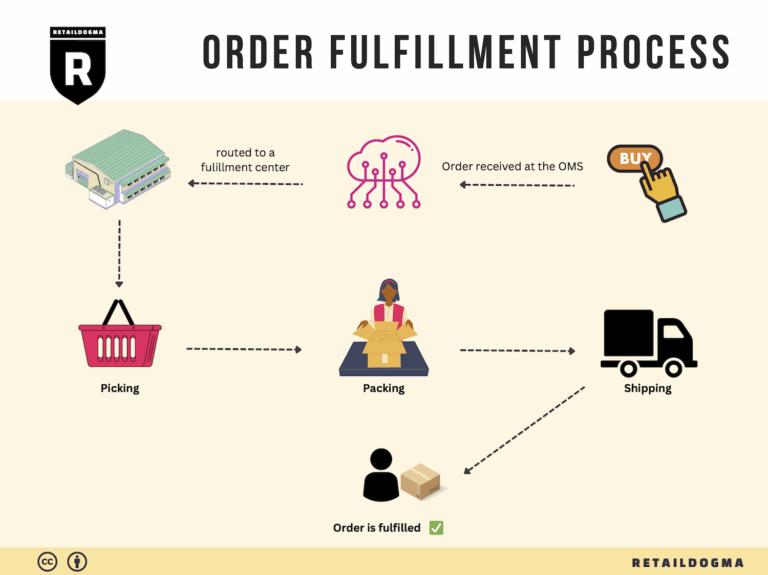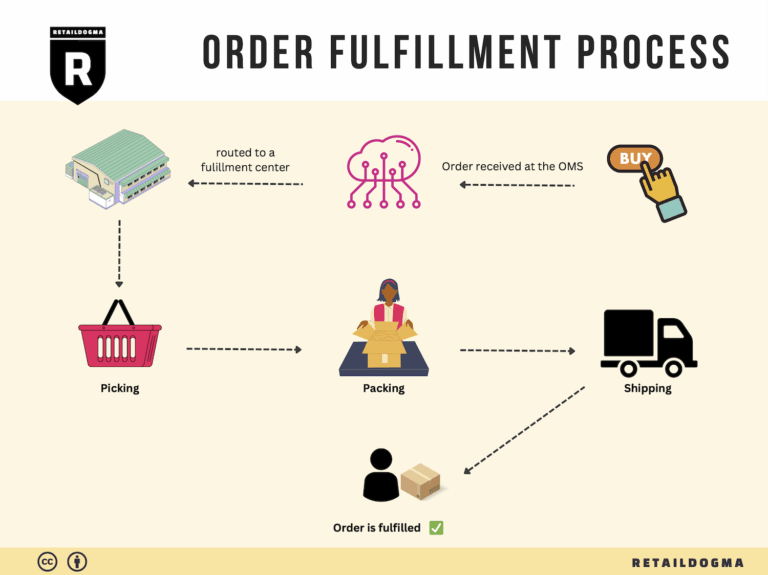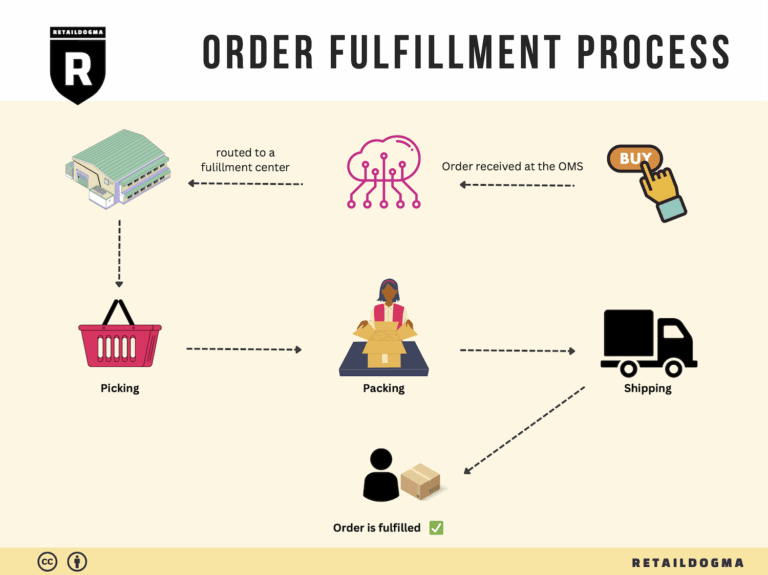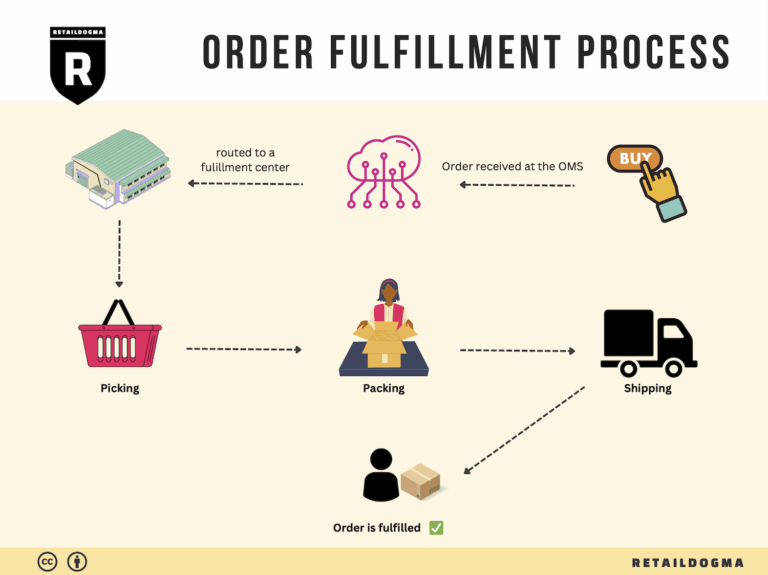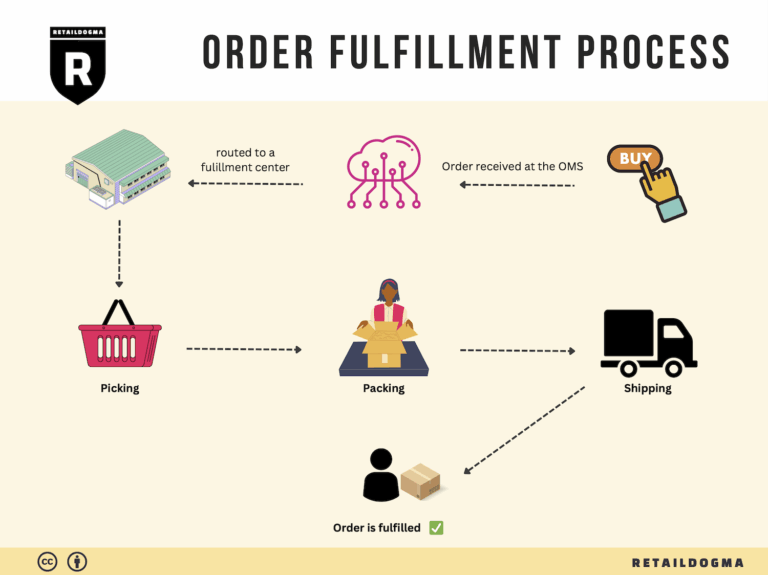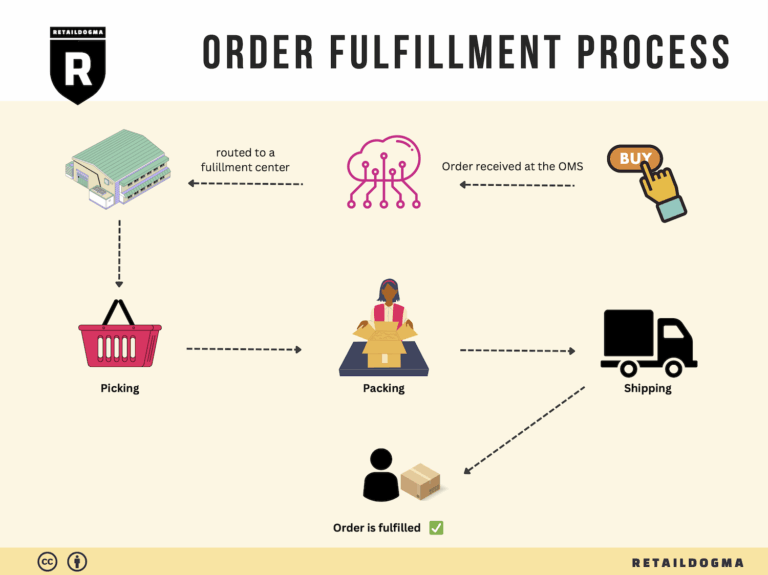Ecommerce Fulfillment Services: The Ultimate Guide (2025)
What is E-commerce Fulfillment? An Introduction for Growing Businesses
Understanding E-commerce Fulfillment
For many growing online businesses, the excitement of scaling sales can quickly turn into a daunting challenge when it comes to packing and shipping orders. As order volumes increase, so do the complexities of logistics—inventory management, order accuracy, and timely delivery can all become overwhelming. This is where e-commerce fulfillment steps in, simplifying the process of getting products to customers.
At its core, fulfillment refers to the entire process of receiving, processing, and delivering an order to the end customer. It encompasses everything from inventory management to order processing, packing, and shipping. For entrepreneurs and operations managers, understanding this process is crucial to not only maintain customer satisfaction but also to scale operations effectively.
This guide aims to demystify e-commerce fulfillment for growing businesses by exploring various fulfillment models. We will delve into options such as Third-Party Logistics (3PL) and Fulfillment by Amazon (FBA), both of which offer unique advantages depending on your business needs. You will learn about the core services offered by fulfillment centers, including inventory storage, order processing, and shipping logistics.
Choosing the right fulfillment partner can be a pivotal decision for your business. This guide will provide insights into the factors you should consider, such as service reliability, technology integration, and scalability. Additionally, we’ll discuss pricing structures, helping you to understand the cost implications of different fulfillment strategies and how to assess them against your budget and growth projections.
Our goal with this guide is to empower you, the business owner or operations manager, to make informed decisions about your logistics. By equipping you with the necessary knowledge about e-commerce fulfillment, we aim to enable you to streamline your operations, enhance customer experience, and ultimately drive sales growth. Whether you are just starting out or looking to optimize an existing fulfillment strategy, this guide is designed to provide practical, actionable insights that can help you navigate the complexities of e-commerce logistics with confidence.
What You’ll Learn In This Guide
- What is E-commerce Fulfillment? An Introduction for Growing Businesses
- The Order Fulfillment Process: From ‘Buy’ Button to Customer’s Door
- Comparing Fulfillment Models: In-House vs. 3PL vs. Dropshipping
- A Deep Dive into Amazon FBA: Pros, Cons, and Who It’s For
- Core Services Offered by Fulfillment Centers
- How to Choose a Fulfillment Partner: A 6-Point Checklist
- Understanding Fulfillment Pricing: A Breakdown of Common Fees
- Frequently Asked Questions (FAQs) about Fulfillment
- Conclusion: Is Outsourcing Fulfillment the Right Move for Your Business?
- Important Disclaimer
The Order Fulfillment Process: From ‘Buy’ Button to Customer’s Door
1. Receiving Inventory
The order fulfillment process begins with receiving inventory, a critical step that sets the stage for efficient operations. During this phase, products from suppliers arrive at the fulfillment center or warehouse. Each item is checked against purchase orders to ensure accuracy in quantity and quality. This step is essential because discrepancies can lead to stock shortages or excess inventory, both of which can disrupt the fulfillment process and lead to customer dissatisfaction.
A key term associated with this step is SKU (Stock Keeping Unit). An SKU is a unique identifier for each product, allowing for precise tracking and management of inventory levels. By accurately logging SKUs during the receiving phase, businesses can maintain real-time visibility into their inventory, enabling better decision-making regarding reordering and inventory management.
2. Warehouse Storage
Once the inventory is received, it is moved into storage within the warehouse. This step involves organizing products in a way that maximizes space and facilitates easy access. Efficient storage solutions often employ various strategies, such as utilizing vertical space and categorizing items based on their frequency of sale.
The importance of this step lies in its impact on overall efficiency. Properly organized storage minimizes the time spent locating items during the picking process, directly influencing order fulfillment speed. A critical concept in this phase is ABC Analysis, a method for categorizing inventory based on sales volume. By identifying high-turnover items (A items), medium-turnover (B), and low-turnover (C), businesses can optimize their storage layout to ensure that the most frequently sold items are easily accessible.
3. Order Picking
Order picking is the process of selecting items from the warehouse to fulfill customer orders. This step is crucial, as it directly affects order accuracy and speed. The picking process can be accomplished using various methods, including single order picking, batch picking, or wave picking, depending on the volume of orders and the layout of the warehouse.
The importance of efficient picking cannot be overstated. Delays or inaccuracies in this step can lead to order fulfillment errors, resulting in increased costs and customer dissatisfaction. A key term related to this phase is pick lists. A pick list is a document or digital tool that outlines the items to be picked for each order, including their locations within the warehouse. By using pick lists, businesses can streamline the picking process, reducing the time spent searching for items and minimizing the risk of errors.
4. Order Packing
After items have been picked, they move to the packing stage. This step involves securely packaging the products to ensure they arrive at the customer’s door in excellent condition. Proper packing is not only essential for protecting the products during transit but also for optimizing shipping costs and ensuring compliance with shipping regulations.
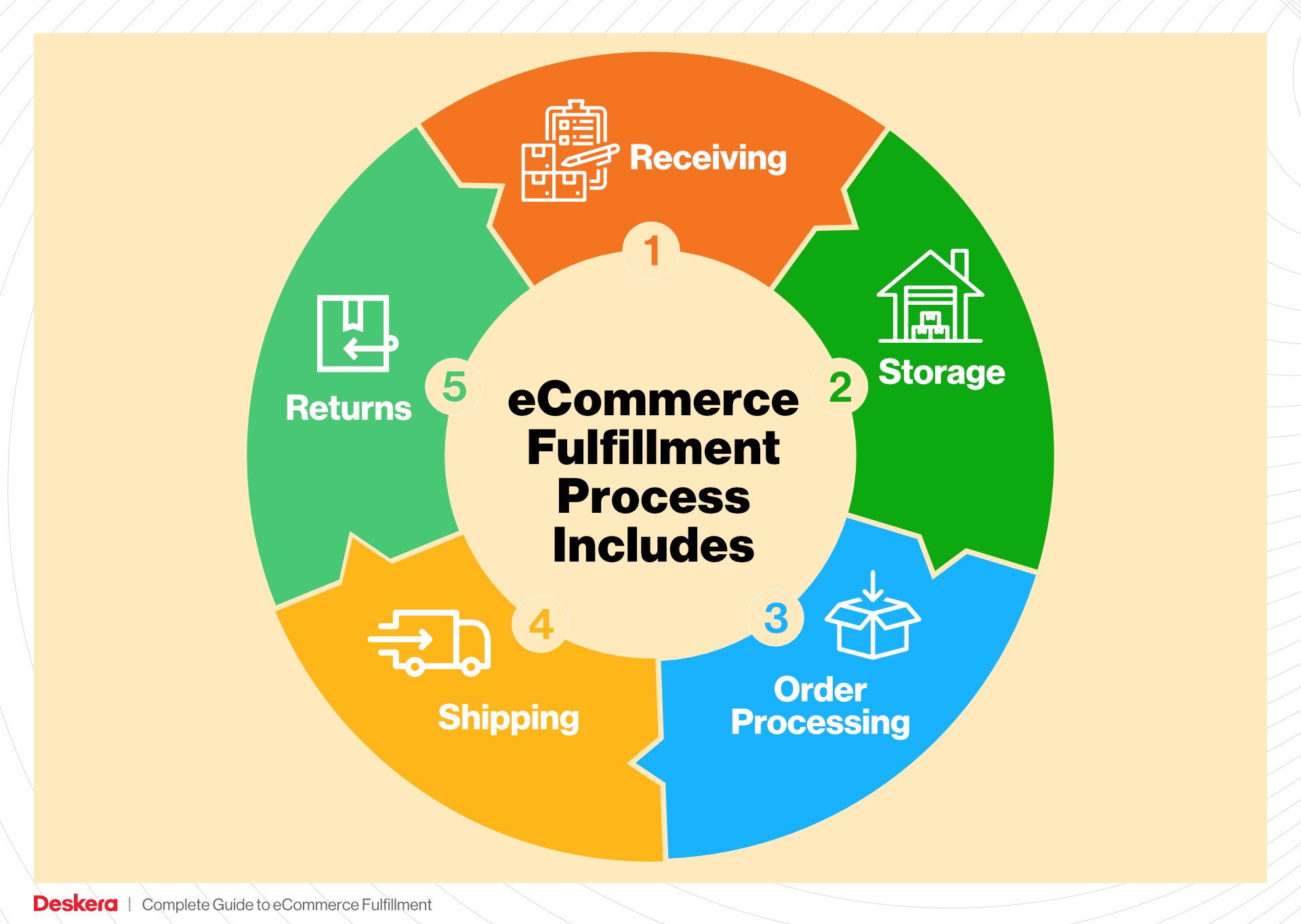
The significance of this phase is highlighted by the impact of packaging on customer experience. Well-packaged products can enhance customer satisfaction and foster brand loyalty. A key term associated with order packing is dimensional weight. This pricing method considers both the weight and volume of the package when calculating shipping costs, encouraging businesses to use appropriately sized packaging to minimize expenses.
5. Shipping & Delivery
The final step in the order fulfillment process is shipping and delivery. Once orders are packed, they are labeled and dispatched to shipping carriers for delivery to customers. This phase is crucial because it represents the last point of contact with the customer, impacting their overall satisfaction with the purchasing experience.
Effective shipping and delivery strategies can significantly enhance a business’s reputation and customer loyalty. A key term in this context is last-mile delivery, which refers to the final step of the delivery process when the package reaches the customer’s doorstep. Companies increasingly focus on optimizing last-mile delivery through partnerships with third-party logistics providers or utilizing technology to improve tracking and communication with customers, ensuring timely deliveries and clear updates.
By understanding and optimizing each of these steps in the order fulfillment process, e-commerce businesses can enhance efficiency, reduce costs, and improve customer satisfaction, ultimately driving growth and success in the competitive landscape.
Comparing Fulfillment Models: In-House vs. 3PL vs. Dropshipping
Fulfillment Model Comparison
| Model | Who Handles Inventory | Best For (Business Stage) | Key Advantage | Key Disadvantage |
|---|---|---|---|---|
| In-House Fulfillment | The business itself | Established businesses with sufficient resources | Complete control over inventory and processes | High overhead costs and resource demands |
| Third-Party Logistics (3PL) | Third-party providers | Startups to medium-sized businesses | Scalability and reduced operational burden | Less control over inventory and logistics |
| Dropshipping | Supplier or manufacturer | New businesses and entrepreneurs | Low startup costs and minimal risk | Low margins and reliance on suppliers |
In-House Fulfillment
In-house fulfillment refers to a model where businesses manage their own inventory and fulfillment operations. This approach is typically favored by established businesses that have the resources to invest in warehouse space, staff, and technology. By controlling every aspect of the fulfillment process, from inventory management to shipping, companies can tailor their operations to meet specific customer needs and maintain high service levels. This model allows for greater flexibility in terms of product offerings and fulfillment speed, as businesses can implement changes swiftly based on real-time data and customer feedback. However, the key disadvantage of in-house fulfillment is the significant overhead costs associated with maintaining a warehouse, staffing, and investing in technology. This model can also become burdensome during peak seasons, as businesses must ensure they have the capacity to handle fluctuations in demand.
Third-Party Logistics (3PL)
Third-party logistics (3PL) involves outsourcing fulfillment operations to specialized providers. This model is particularly advantageous for startups and medium-sized businesses that may not have the resources or expertise to manage logistics effectively. 3PL providers offer scalability, allowing businesses to expand their operations without the need for significant upfront investment in facilities or technology. By partnering with a 3PL, businesses can benefit from established networks, expertise in logistics management, and often better shipping rates due to bulk agreements with carriers. However, the reliance on a third party can lead to challenges in inventory control and visibility, as businesses may have limited access to real-time data on their inventory levels and order status. Additionally, any service disruptions on the part of the 3PL can directly impact a business’s ability to fulfill orders promptly.
Dropshipping
Dropshipping is a fulfillment model where the retailer does not hold inventory but instead relies on suppliers to ship products directly to customers. This model is particularly popular among new entrepreneurs and small businesses due to its low startup costs and minimal risk. Retailers can list a wide range of products without the burden of managing inventory or fulfillment logistics, making it easier to test new markets and product lines. Since the retailer does not need to invest in inventory upfront, they can allocate resources to marketing and customer acquisition instead. However, dropshipping comes with its own set of challenges. The key disadvantages include lower profit margins due to reliance on suppliers, potential issues with product quality and shipping times, and a lack of control over inventory levels. Retailers must also be vigilant about supplier reliability, as any delays or errors in fulfillment can lead to dissatisfied customers and harm the brand’s reputation.
A Deep Dive into Amazon FBA: Pros, Cons, and Who It’s For
Understanding Fulfillment by Amazon (FBA)
Fulfillment by Amazon (FBA) is a service provided by Amazon that allows sellers to store their products in Amazon’s fulfillment centers. Amazon then takes care of storage, packaging, and shipping of these products directly to customers. This service not only simplifies logistics for sellers but also enhances the customer experience by leveraging Amazon’s extensive distribution network. Sellers benefit from Amazon’s trusted platform, which can lead to increased sales and customer loyalty.
How FBA Works
-
Setup and Product Listing: Sellers create an Amazon seller account and list their products on the platform. They can choose to enroll in FBA for their listings.
-
Shipping Inventory to Amazon: Sellers send their products to Amazon’s fulfillment centers. Amazon provides specific guidelines on how to prepare and package these products to ensure they are ready for storage and shipping.
-
Storage and Management: Once received, Amazon stores the products in its warehouses. The inventory is managed by Amazon, which includes tracking stock levels and handling returns.
-
Order Fulfillment: When a customer orders a product, Amazon picks, packs, and ships the item on behalf of the seller. They handle all aspects of the transaction, including customer service and returns.
-
Payment and Fees: After the sale, Amazon deducts its fees from the sale price, which covers storage, fulfillment, and other services. Sellers receive the remaining balance.
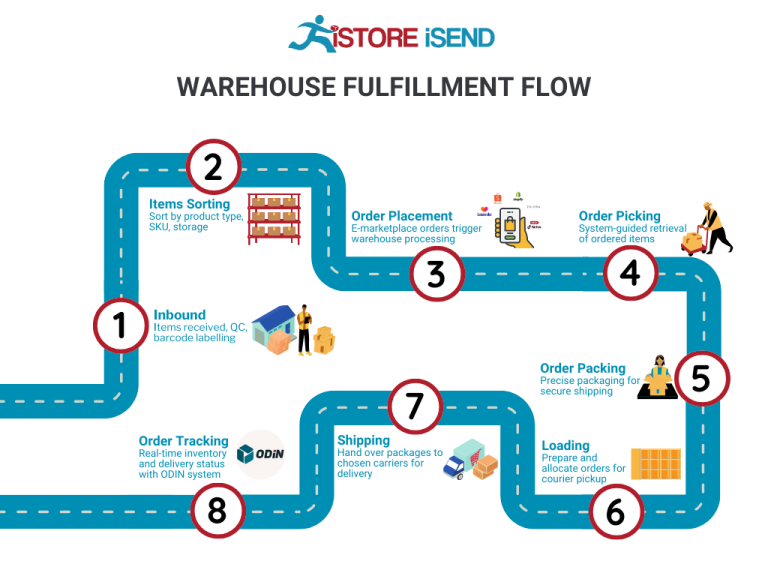
Pros of FBA
-
Prime Eligibility: Products fulfilled through FBA are eligible for Amazon Prime, which offers free two-day shipping to Prime members. This can significantly boost sales as many customers prefer products with Prime eligibility due to the quick delivery times.
-
Customer Trust: Amazon is a well-known and trusted brand. By using FBA, sellers can leverage Amazon’s reputation, which can enhance customer confidence in their products. This trust can lead to higher conversion rates and repeat purchases.
-
Multi-Channel Fulfillment: FBA allows sellers to fulfill orders from other sales channels, such as their own websites or other online marketplaces. This multi-channel fulfillment capability simplifies logistics by centralizing inventory management.
-
Scalability: FBA provides a scalable solution for growing businesses. As sales increase, sellers can easily send more inventory to Amazon without needing to invest in additional warehouse space or logistics infrastructure.
-
Reduced Administrative Burden: By outsourcing storage, packing, and shipping to Amazon, sellers can focus on other aspects of their business, such as marketing and product development. This can lead to more efficient operations and potential growth.
-
Access to Amazon’s Customer Service: Amazon handles all customer service inquiries for FBA orders, including returns and refunds. This can save sellers time and effort, allowing them to focus on core business functions.
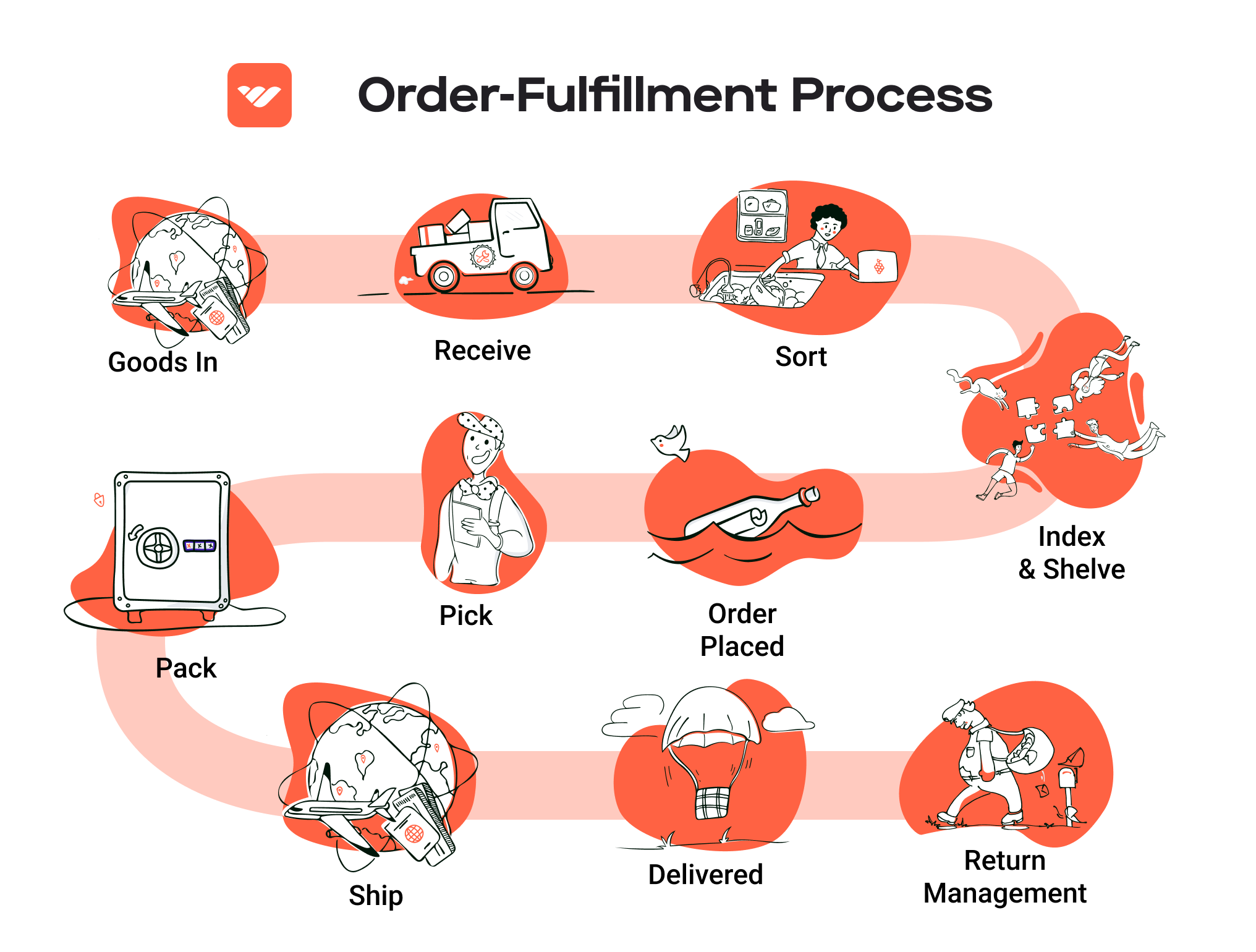
Cons of FBA
-
High Fees: FBA fees can add up quickly, including storage fees, fulfillment fees, and additional charges for long-term storage. For sellers with lower margins, these costs can significantly impact profitability.
-
Strict Inventory Rules: Amazon has strict guidelines regarding inventory management, including requirements for packaging and labeling. Non-compliance can lead to additional fees or removal of inventory.
-
Commingling Risks: FBA operates on a commingling model, where inventory from different sellers may be stored together. This can pose a risk if a seller’s products are damaged or if there are issues with counterfeit products, as it can affect their reputation and customer trust.
-
Limited Control Over Fulfillment: While FBA simplifies logistics, it also means that sellers have less control over the fulfillment process. Issues such as shipping delays or inventory mismanagement are handled by Amazon, which can lead to dissatisfaction among customers.
-
Dependency on Amazon: Businesses using FBA become dependent on Amazon’s platform and policies. Changes in Amazon’s fee structure, fulfillment processes, or seller policies can directly impact a seller’s bottom line.
-
Inventory Limitations: Amazon imposes limits on the amount of inventory sellers can send to fulfillment centers, particularly for new sellers. This can restrict growth and lead to stockouts during peak sales periods.
Who is FBA Best For?
Fulfillment by Amazon is particularly well-suited for:
-
Small to Medium-Sized Businesses: Companies looking to scale their operations without investing heavily in logistics infrastructure can benefit significantly from FBA.
-
Sellers with High Sales Volume: Businesses that anticipate high sales volume, particularly during peak seasons, will find FBA’s scalability and efficiency advantageous.
-
Brands Seeking to Leverage Amazon’s Reach: Sellers who want to tap into Amazon’s vast customer base and benefit from Prime eligibility should consider FBA as a strategic option.
-
Entrepreneurs Focusing on Growth: Businesses looking to expand into new markets or product lines can use FBA to manage logistics more effectively while they focus on growth strategies.
-
Sellers With Limited Resources: For those who lack the resources or expertise to manage their own fulfillment operations, FBA provides a comprehensive solution that allows them to outsource logistics.
In conclusion, while Fulfillment by Amazon offers numerous advantages for e-commerce businesses, it is essential for sellers to weigh these against the potential drawbacks. By understanding the implications of using FBA, business owners can make informed decisions that align with their growth objectives and operational capabilities.
Core Services Offered by Fulfillment Centers
Inventory Management & Warehousing
Inventory management and warehousing are foundational services offered by fulfillment centers, ensuring that e-commerce businesses can efficiently store and manage their stock levels. Fulfillment centers utilize advanced inventory management systems that track product quantities in real-time, allowing businesses to maintain optimal stock levels without overcommitting resources.
The benefits of effective inventory management are multifaceted. Firstly, it minimizes the risk of stockouts, which can lead to lost sales and dissatisfied customers. By accurately monitoring inventory levels, businesses can forecast demand more effectively, facilitating timely replenishments and reducing excess inventory costs. Additionally, centralized warehousing allows for economies of scale, which can lower storage costs and streamline logistics operations. This is particularly advantageous for e-commerce businesses looking to scale, as it provides a reliable platform for rapid growth without the overhead associated with managing multiple storage locations.
Pick and Pack Services
Pick and pack services are essential for fulfilling customer orders efficiently. This process involves selecting items from inventory (picking) and preparing them for shipment (packing). Fulfillment centers leverage technology, including barcode scanning and automation, to ensure accuracy and speed in order fulfillment.
For e-commerce businesses, the benefits of pick and pack services are significant. First, they enhance order accuracy, reducing the likelihood of returns due to incorrect items being shipped. This directly impacts customer satisfaction and retention rates. Moreover, by outsourcing this process to fulfillment centers, businesses can focus on their core competencies, such as marketing and product development, rather than on logistical challenges. The speed of processing orders is also improved, enabling businesses to offer faster delivery options, which is increasingly expected by consumers in today’s market.
Kitting and Assembly
Kitting and assembly services involve combining multiple products into a single package or preparing products for sale in a specific configuration. This service is particularly useful for e-commerce businesses that offer bundled products or complex items requiring assembly before shipping. Fulfillment centers can handle these processes efficiently, ensuring that products are packaged according to the specific needs of the business.
The primary benefit of kitting and assembly services is the ability to create customized offerings that can enhance the customer experience. For example, businesses can offer gift sets, starter kits, or promotional bundles that appeal to consumers seeking convenience or added value. Additionally, this service can streamline operations by consolidating multiple items into one shipment, reducing shipping costs and improving delivery times. As a result, businesses can increase their average order value while also simplifying their logistics processes.
Returns Management (Reverse Logistics)
Returns management, often referred to as reverse logistics, is a critical component of fulfillment services that focuses on processing returned items. Effective returns management involves not only handling the physical return of products but also assessing their condition, restocking them when possible, and managing customer refunds or exchanges.
For e-commerce businesses, robust returns management can significantly impact overall customer satisfaction and loyalty. A streamlined returns process reassures customers that they can shop with confidence, knowing that they have options should they be unsatisfied with their purchase. This can lead to increased sales, as consumers are more likely to buy when they perceive a low risk associated with returns. Furthermore, efficient returns management can help businesses reclaim value from returned goods, whether through restocking, refurbishing, or recycling, thereby minimizing losses associated with returns.
In conclusion, fulfillment centers offer a suite of core services that are essential for the success of e-commerce businesses. From effective inventory management and efficient pick and pack operations to kitting and assembly services and comprehensive returns management, these services provide the logistical backbone needed to scale operations and enhance customer satisfaction. By leveraging the capabilities of fulfillment centers, e-commerce businesses can focus on growth and innovation, confident that their logistics are in expert hands.
How to Choose a Fulfillment Partner: A 6-Point Checklist
Location & Warehouse Network
Importance: The location of your fulfillment partner’s warehouses is crucial for minimizing shipping times and costs. A strategically placed network can significantly enhance your logistics efficiency, especially for e-commerce businesses aiming for fast delivery.
Questions to Ask:
– Where are your warehouses located, and how does this align with my target customer base?
– How many distribution centers do you operate, and what is their capacity?
– What is your average shipping time to key regions I serve?
– Are your facilities equipped to handle my specific inventory needs (e.g., temperature control for pharmaceuticals)?
Technology & Integrations
Importance: In today’s digital landscape, technology plays a vital role in streamlining operations. A fulfillment partner with robust technology can provide real-time tracking, inventory management, and integration with your existing e-commerce platforms, enhancing overall efficiency.
Questions to Ask:
– What technology do you use for inventory management and order tracking?
– Can your systems integrate seamlessly with my e-commerce platform (e.g., Shopify, WooCommerce)?
– Do you offer API access for custom integrations?
– How do you handle updates and improvements to your technology stack?
Specializations (e.g., cold storage, oversized items)
Importance: Depending on your product range, you may require specific capabilities from your fulfillment partner. For example, if you deal with perishable goods, a partner with cold storage capabilities is essential. Understanding these specializations ensures your products are stored and handled correctly.
Questions to Ask:
– What specific types of products do you specialize in handling (e.g., pharmaceuticals, fragile items, oversized products)?
– Do you have the necessary certifications for specialized handling (e.g., FDA compliance for pharmaceuticals)?
– How do you manage inventory for seasonal or fluctuating demand?
– Can you provide examples of how you’ve handled similar products in the past?
Scalability & Capacity
Importance: As your business grows, so will your logistics needs. Choosing a fulfillment partner that can scale with you will save you the hassle of switching providers or facing capacity issues during peak seasons.
Questions to Ask:
– What is your current capacity, and how do you plan to expand in the future?
– How quickly can you increase capacity if my order volume spikes?
– Do you have experience managing peak seasons for other clients?
– What measures do you take to ensure service quality during periods of high demand?
Pricing and Contracts
Importance: Understanding the pricing structure and contractual obligations of your fulfillment partner is vital for maintaining your budget and avoiding unexpected costs. Transparency in pricing models helps you make informed decisions.
Questions to Ask:
– Can you provide a breakdown of your pricing structure (e.g., storage fees, pick-and-pack fees, shipping costs)?
– Are there any hidden fees I should be aware of (e.g., for returns, special handling)?
– What are the terms of your contract, and are there any exit clauses?
– How often do you review and adjust your pricing?
Customer Support & Reviews
Importance: Reliable customer support is essential for resolving issues quickly and maintaining smooth operations. Additionally, reviews and testimonials can provide insight into a partner’s reliability and service quality.
Questions to Ask:
– What level of customer support do you provide (e.g., dedicated account manager, 24/7 support)?
– How do you handle customer complaints or issues that arise during fulfillment?
– Can you provide references or case studies from current or past clients?
– What is your average response time for support inquiries?
Conclusion
Choosing the right fulfillment partner is critical for the success of your e-commerce operations. By using this checklist, you can systematically evaluate potential partners based on their capabilities, technology, and support, ensuring that you select a partner that aligns with your business goals and growth plans. Remember to take your time during this process; the right partner can significantly enhance your operational efficiency and customer satisfaction, ultimately driving your business forward.
Understanding Fulfillment Pricing: A Breakdown of Common Fees
Initial Setup Fees
Initial setup fees are one-time charges incurred when establishing a new fulfillment account with a provider. These fees cover the costs associated with onboarding your business, which may include account setup, integration with your e-commerce platform, and initial inventory setup.
The calculation of these fees can vary significantly depending on the complexity of the integration and the specific services you require. For instance, if you need custom software solutions or special configurations to accommodate unique business processes, the setup fees may be higher. It’s essential to clarify what is included in the setup fee and whether there are any additional charges for ongoing support or modifications after the initial setup.
Receiving Fees
Receiving fees are charged for the process of accepting and processing incoming inventory shipments. This fee typically covers the labor and resources needed to unload, inspect, and input your products into the fulfillment center’s inventory management system.
These fees can be calculated per shipment or based on the volume of goods received (e.g., per pallet or carton). Some providers might offer tiered pricing based on the number of shipments you send per month, incentivizing higher volume transactions. It’s advisable to inquire about any potential extra costs, such as handling damaged goods or discrepancies in inventory counts.
Storage Fees (per pallet/bin)
Storage fees are recurring charges for the space your inventory occupies within the fulfillment center. These fees can be calculated in several ways, with the most common models being based on a per-pallet or per-bin basis.
A pallet is typically a standard unit used for storing bulk items, while a bin may refer to smaller, more varied products stored in designated areas. The calculation of storage fees usually involves the monthly rate multiplied by the number of pallets or bins your products occupy. It’s essential to understand how the storage space is measured and whether there are additional charges for using special storage conditions, such as climate control for sensitive items.
Pick & Pack Fees (per item/order)
Pick and pack fees are charged for the labor involved in retrieving items from inventory and preparing them for shipment. These fees can be calculated on a per-item or per-order basis, depending on how the fulfillment center structures its pricing.
For example, a fulfillment center may charge a fixed fee for picking and packing each item, or they might offer a flat fee for each order processed, regardless of the number of items. Some providers may also impose additional charges for special packaging requirements or for orders that require complex assembly. Understanding the structure of these fees is crucial, as it can significantly affect your overall fulfillment costs, especially if your products vary greatly in size and complexity.
Shipping Fees
Shipping fees are perhaps the most variable and significant part of fulfillment pricing. These fees cover the cost of delivering your products to customers and can include multiple components such as carrier charges, fuel surcharges, and handling fees.
Shipping fees are generally calculated based on the weight and dimensions of the package, the shipping distance, and the selected shipping method (standard, expedited, etc.). Many fulfillment centers negotiate bulk shipping rates with carriers, which can lead to cost savings for businesses. It’s wise to request detailed shipping fee structures from your fulfillment provider, including any potential discounts for higher shipping volumes or specific routes.
Tips for Getting an Accurate Quote
-
Clearly Define Your Needs: Before seeking quotes, outline your fulfillment requirements, including your expected order volume, product dimensions, and any special handling needs. This clarity will help providers give you more accurate estimates.
-
Request Detailed Pricing Breakdowns: Ask for itemized quotes that specify each fee type. This transparency will help you understand the total costs and identify areas where you can potentially save.
-
Consider Volume Discounts: Inquire about pricing tiers for higher volumes. Many fulfillment centers offer discounts based on order frequency or total shipping volume, so be sure to discuss your projected growth.
-
Evaluate Additional Services: If you need value-added services like kitting, labeling, or returns processing, make sure these are included in the quote.
-
Negotiate Terms: Don’t hesitate to negotiate the terms and conditions of the pricing. Many providers are open to customizing their services to better fit your needs and budget.
By understanding these common fee structures and how they are calculated, you can make informed decisions that align with your business goals and budget, ultimately enhancing your e-commerce operations.
Frequently Asked Questions (FAQs) about Fulfillment
1. What is a Walgreens Fulfillment Center?
A Walgreens Fulfillment Center is a specialized facility designed to streamline the processing and shipping of prescriptions and retail products. Utilizing advanced robotic technology, these centers efficiently handle large volumes of orders, allowing Walgreens to serve its customers and pharmacies more effectively.
2. How do Walgreens Micro-Fulfillment Centers operate?
Walgreens Micro-Fulfillment Centers (MFCs) leverage innovative automation to dispense and ship prescriptions. They centralize pharmacy operations, enabling quicker order fulfillment while reducing the administrative burden on pharmacists, allowing them to focus more on patient care.
3. What is the difference between a warehouse and a fulfillment center?
A warehouse primarily serves as a storage space for products, whereas a fulfillment center is designed specifically for processing and shipping orders. Fulfillment centers are equipped with technology and systems to manage inventory, pick, pack, and ship products directly to customers or retail locations.
4. How does Walgreens’ fulfillment model support local pharmacies?
By operating MFCs, Walgreens can process a significant portion of prescription orders centrally, freeing up pharmacists in local stores to spend more time on patient care. This model enhances service delivery and allows for better health services at community pharmacies.
5. What are the advantages of using Walgreens for e-commerce fulfillment?
Walgreens offers a robust network of MFCs and retail locations that can double as fulfillment centers, enabling efficient same-day delivery options. Their advanced technology and streamlined processes help improve order accuracy, reduce shipping times, and enhance the customer experience.
6. What role do third-party delivery services play in Walgreens’ fulfillment strategy?
Walgreens partners with third-party delivery services, such as DoorDash and Uber, to facilitate same-day delivery of orders. This integration allows Walgreens to enhance its delivery capabilities, ensuring customers receive their orders quickly and efficiently.
7. How much do fulfillment services cost at Walgreens?
Costs for fulfillment services at Walgreens can vary based on factors such as order volume, product type, and specific services required. While Walgreens does not publicly list pricing, businesses should consider contacting their sales team to obtain tailored pricing based on individual needs.
8. What is a 3PL, and how does it relate to Walgreens’ fulfillment strategy?
A 3PL, or third-party logistics provider, is a company that offers logistics services to businesses, including warehousing, fulfillment, and shipping. Walgreens’ fulfillment model integrates its own facilities with external delivery services to provide comprehensive logistics solutions for e-commerce businesses.
9. How does Walgreens ensure order accuracy in its fulfillment centers?
Walgreens employs advanced robotics and automated systems in its MFCs, which significantly reduce human error in order picking and packing. Additionally, continuous training for staff and quality control measures are implemented to maintain high accuracy rates in order fulfillment.
10. Can small businesses use Walgreens’ fulfillment services?
While Walgreens primarily serves its retail and pharmacy customers, small businesses can explore options to partner with Walgreens for fulfillment services. This may involve leveraging their retail locations for order pickup or utilizing their delivery network for e-commerce solutions. For specific inquiries, businesses should reach out directly to Walgreens’ operations team.
Conclusion: Is Outsourcing Fulfillment the Right Move for Your Business?
Evaluating the Benefits of Outsourcing Fulfillment
As e-commerce continues to evolve, the decision to outsource fulfillment is becoming increasingly strategic for businesses seeking to scale. Leveraging a fulfillment service can offer substantial benefits, including significant time savings, enhanced scalability, and access to specialized expertise. By outsourcing, businesses can redirect their focus from operational minutiae to core activities such as marketing and customer engagement. This shift not only streamlines processes but also positions companies to respond more dynamically to market demands.
Scalability is another critical advantage of utilizing fulfillment services. As your business grows, so does the complexity of managing logistics. A dedicated fulfillment partner can seamlessly adjust to fluctuations in order volume, ensuring that you can meet customer expectations without the overhead costs associated with maintaining your own warehousing and staffing. This flexibility is essential in a rapidly changing e-commerce landscape.
Furthermore, fulfillment partners often bring valuable industry expertise and technological advancements that may be difficult to replicate in-house. From automating inventory management to optimizing shipping routes, these capabilities can enhance efficiency and reduce operational risks.
However, the success of outsourcing fulfillment hinges on selecting the right partner. It’s vital to conduct thorough due diligence to ensure alignment with your business goals, values, and customer service standards. A strong partnership can drive growth, while a misaligned one can hinder progress.
Take Action Today
To determine if outsourcing fulfillment is the right move for your business, begin by auditing your current shipping processes. Assess your operational efficiency, customer satisfaction, and scalability potential. This evaluation will illuminate whether a fulfillment partner could enhance your logistics strategy and support your growth objectives. Embrace the opportunity to transform your fulfillment operations and stay ahead in the competitive e-commerce landscape.
Important Disclaimer
⚠️ Important Disclaimer
The information in this guide is for educational purposes. Fulfillment services, pricing, and platform features change frequently. Always conduct your own due diligence and consult with providers directly before making business decisions.

